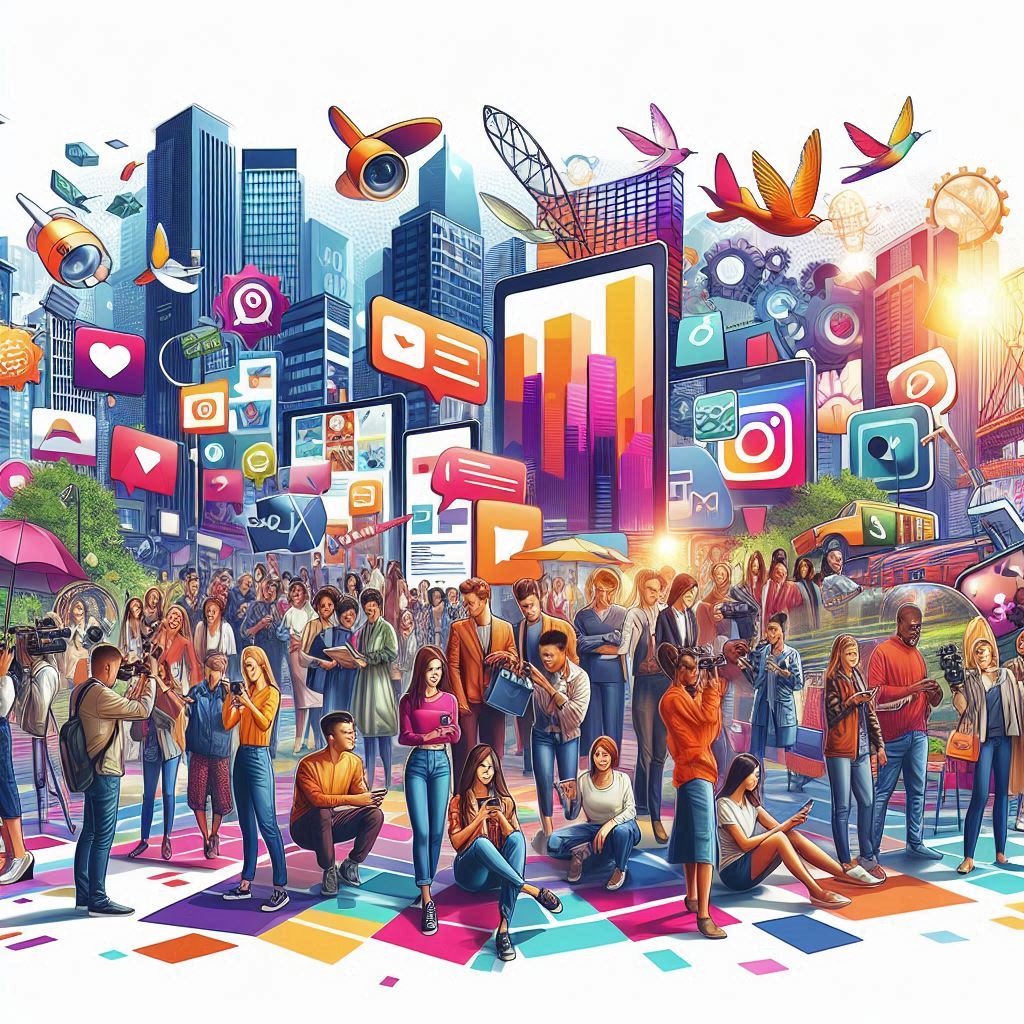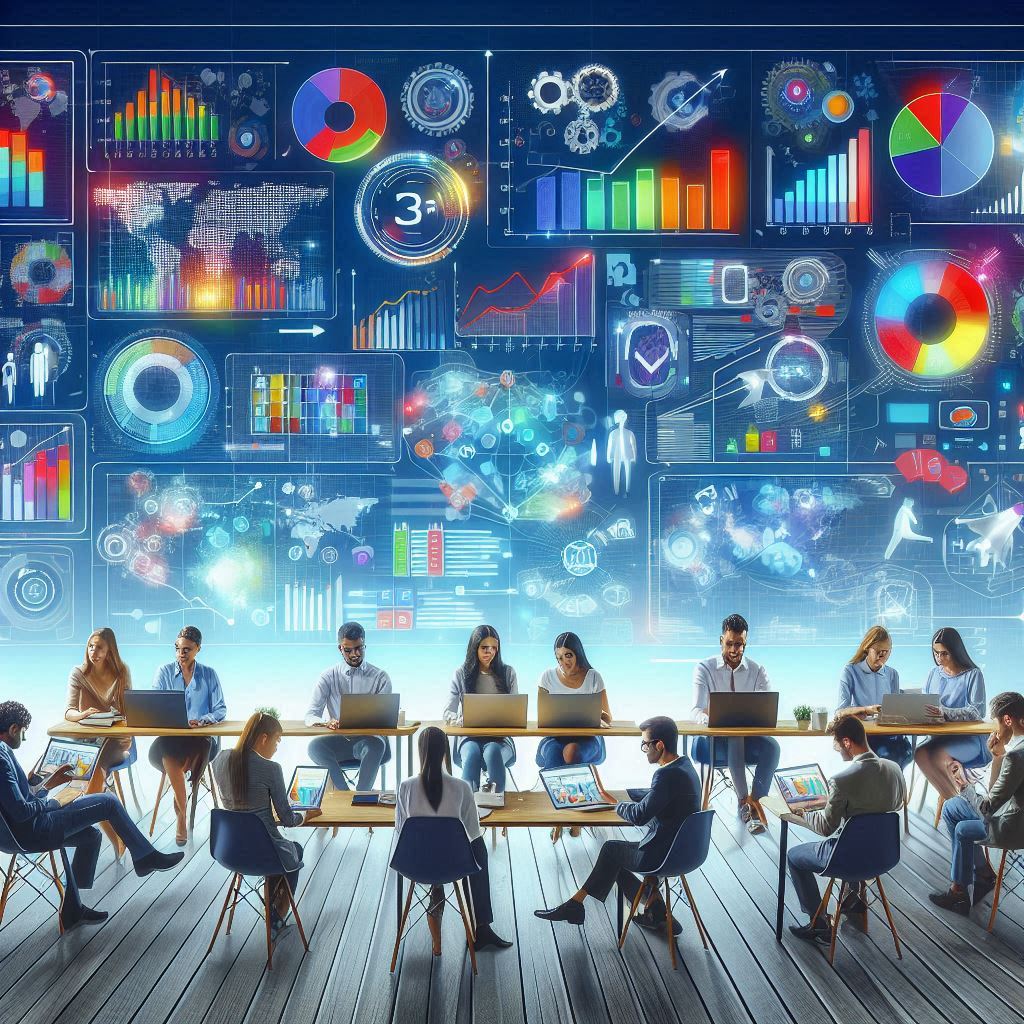How AI Marketing Optimization Reduces Customer Acquisition Costs in 2025
Customer acquisition costs have become the make-or-break metric for growth-stage companies. While traditional marketing approaches often feel like throwing darts in the dark, hoping something sticks, AI marketing optimization transforms this guesswork into a precision science. The results speak volumes: companies deploying AI-powered marketing solutions achieve an average 37% reduction in customer acquisition cost compared to those relying on traditional tactics alone.
This isn’t just about minor improvements. We’re talking about a fundamental shift in how marketing dollars work harder, smarter, and more efficiently than ever before. For CMOs and marketing operations managers facing mounting pressure to justify every dollar spent, AI optimization has evolved from a nice-to-have experiment to an essential competitive advantage.
TABLE OF CONTENTS:
- Key Takeaways
- The CAC Crisis Driving AI Adoption
- Precision Targeting Eliminates Wasted Spend
- Conversion Rate Optimization Multiplies Efficiency
- Automation Reduces Operational Overhead
- Predictive Analytics Prevents Costly Mistakes
- Market Validation and Investment Trends
- Implementation Strategy for CAC Optimization
- Measuring AI Optimization Success
- Overcoming Common Implementation Challenges
- Maximizing Long-Term CAC Efficiency
- Your Next Steps Toward CAC Optimization
- Related Video
Key Takeaways
- The rising CAC challenge: Marketing teams face surging digital ad costs while conversion rates stagnate. Growth-stage SaaS, e-commerce, and B2B brands are hit hardest as inefficient, manual marketing inflates acquisition costs and erodes margins.
- Why traditional marketing fails: Legacy marketing methods rely on broad, imprecise targeting and reactive optimization, resulting in wasted spend, weak attribution, and unsustainable unit economics.
- How AI solves CAC inefficiency: Precision targeting, lookalike modeling, and real-time optimization
- Conversion rate optimization at scale: AI personalization tailors creatives, offers, and landing pages to individual users. Data-driven dynamic testing replaces slow, manual A/B experiments.
- Automation and operational leverage: Routine tasks like bid management, segmentation, and reporting become automated—teams scale output without increasing headcount.
- Predictive analytics and attribution: AI forecasts campaign outcomes and identifies conversion-ready leads. Multi-touch attribution replaces outdated last-click models, revealing true ROI and optimizing spend.
- Proof through market validation: 80% of B2C marketers say AI tools exceeded ROI expectations. 95% plan to increase AI investment for acquisition efficiency. Both B2C and B2B companies report improved pipeline quality and lower spend.
- Implementation blueprint: Start small. Integrate siloed data systems (CRM, ads, analytics) to enable holistic optimization. Build internal AI literacy while leveraging external expertise.
- Measurement and continuous optimization: Go beyond CAC — track precision, conversion rate improvements, and operational gains. Benchmark before AI deployment to quantify true lift.
- Long-term CAC efficiency: Treat AI optimization as an evolving discipline, not a one-time fix. Extend AI use to retention, upselling, and cross-channel personalization. Companies building AI-driven acquisition systems now will gain competitive advantages in 2025 and beyond.
The CAC Crisis Driving AI Adoption
Marketing leaders across industries are grappling with a perfect storm of challenges that make traditional customer acquisition increasingly expensive. Digital advertising costs continue to rise while conversion rates plateau, creating a squeeze that forces teams to do more with less. This pressure intensifies for growth-stage SaaS companies, e-commerce brands, and B2B service providers where sustainable unit economics determine long-term viability.
The root problem isn’t just rising media costs; it’s the inefficiency baked into manual marketing processes. Traditional approaches often cast wide nets, hoping to capture the right prospects within broader audiences. This shotgun strategy leads to significant waste, poor attribution, and ultimately inflated acquisition costs that strain budgets and limit growth potential.
AI marketing optimization addresses these fundamental inefficiencies by introducing precision, automation, and continuous learning into every aspect of the customer acquisition process. Rather than relying on broad demographic targeting or gut-feeling campaign adjustments, AI systems analyze vast datasets to identify patterns, predict behaviors, and optimize spending in real-time.
Precision Targeting Eliminates Wasted Spend

The most immediate impact of AI marketing optimization comes through dramatically improved targeting accuracy. Machine learning algorithms analyze historical customer data, behavioral patterns, and conversion signals to create detailed profiles of high-value prospects. This enables marketers to focus spending exclusively on audiences with the highest likelihood of conversion, eliminating the waste inherent in broad-brush targeting approaches.
Lookalike modeling represents one of the most powerful applications of this precision targeting. AI systems analyze your top customers across numerous variables, including demographics, behaviors, engagement patterns, and purchase timing, to identify prospects with similar characteristics. The result is audience targeting that’s both highly specific and scalable, allowing marketing teams to expand reach while maintaining efficiency.
Real-time optimization takes this precision even further. As campaigns run, AI systems continuously analyze performance data, automatically adjusting targeting parameters, bid amounts, and budget allocation to maximize efficiency. This dynamic optimization ensures marketing spend flows toward the highest-performing segments while reducing investment in underperforming areas.
Conversion Rate Optimization Multiplies Efficiency
Higher conversion rates create a powerful multiplier effect on marketing efficiency. When the same advertising spend produces more customers, the cost per acquisition naturally decreases. Marketing teams using AI report 25% higher conversion rates, which directly lowers cost-per-acquisition by spreading spend over more converted customers.
AI-powered personalization drives much of this conversion improvement. Rather than showing generic messages to all prospects, AI systems dynamically customize content, offers, and user experiences based on individual characteristics and behaviors. This level of personalization was previously impossible at scale, but machine learning makes it both feasible and profitable.
| Optimization Area | Traditional Approach | AI-Optimized Approach | Typical Improvement |
|---|---|---|---|
| Ad Creative Testing | A/B test 2-3 variations | Dynamic creative optimization across hundreds of variants | 25-40% conversion lift |
| Landing Page Personalization | Static pages for broad segments | Real-time personalization based on visitor data | 15-30% conversion improvement |
| Email Campaign Timing | Send at predetermined times | Predictive send time optimization | 20-35% open rate increase |
| Lead Scoring | Rule-based scoring systems | Machine learning predictive scoring | 40-60% sales efficiency gain |
The compound effect of these improvements creates substantial CAC reductions. When targeting precision increases by 30%, conversion rates improve by 25%, and campaign optimization delivers another 15% efficiency gain, the combined impact often exceeds 50% improvement in overall marketing performance.
Automation Reduces Operational Overhead
Beyond improving campaign performance, AI marketing optimization significantly reduces the human resources required to manage customer acquisition efforts. Tasks that previously consumed hours of manual work, such as bid management, audience segmentation, creative testing, and performance analysis, have become automated processes that run continuously in the background.
Consider the case of Wine Deals, which was facing high customer acquisition costs. They partnered with Single Grain Marketing to implement an AI-assisted content strategy. They achieved a 268% increase in clicks, and their search ranking position moved up by 11.7%.
Automation doesn’t just save time; it enables marketing teams to operate at scale without proportional increases in headcount. A marketing operations manager can oversee AI-driven campaigns across multiple channels, audiences, and creative variants simultaneously, something that would require significantly larger teams using traditional manual approaches.
Predictive Analytics Prevents Costly Mistakes
One of the most valuable aspects of AI marketing optimization is its ability to predict outcomes before they occur. Predictive models analyze historical data to forecast which prospects are most likely to convert, which campaigns will perform best, and how market conditions might affect acquisition costs. This foresight enables proactive optimization rather than reactive adjustments after money has already been wasted.
Lead scoring represents a prime example of predictive analytics in action. Traditional rule-based scoring systems rely on predetermined criteria that may not reflect actual conversion likelihood. AI-powered predictive scoring continuously learns from successful conversions, identifying subtle patterns and signals that human analysts might miss. This results in more accurate lead prioritization and more efficient sales resource allocation.
Attribution modeling benefits tremendously from AI enhancement. Traditional last-click attribution often misrepresents the customer journey, leading to misallocated budgets and inflated CACs for upper-funnel activities. AI-powered multi-touch attribution models analyze the entire customer journey, properly crediting each touchpoint’s contribution to conversion. This improved attribution enables more accurate CAC calculations and better budget allocation decisions.
Market Validation and Investment Trends

The effectiveness of AI marketing optimization is more than just theoretical; it’s validated by widespread marketer adoption and satisfaction. Recent research shows that 80% of B2C marketers say AI marketing tools exceeded ROI expectations, and 95% plan to increase AI investment specifically because of improved customer-acquisition efficiency.
This market consensus reflects the tangible results organizations achieve when implementing AI optimization strategies. Companies aren’t just experimenting with AI marketing; they’re doubling down on investments because the CAC reductions and efficiency gains directly impact bottom-line profitability.
Implementation Strategy for CAC Optimization
Successfully implementing AI marketing optimization requires a strategic approach that balances quick wins with long-term transformation. Start by identifying the highest-impact opportunities within your current marketing stack—areas where manual processes create obvious inefficiencies or where targeting could be significantly improved.
Data integration forms the foundation of effective AI optimization. Siloed data across channels prevents the holistic view necessary for AI systems to deliver optimal results. Prioritize connecting your CRM, advertising platforms, website analytics, and email marketing systems to create a unified data foundation that enables cross-channel optimization.
Begin with pilot programs in controlled environments rather than attempting full-scale transformation immediately. Test AI-powered bidding optimization on a subset of campaigns, implement predictive lead scoring for specific product lines, or deploy dynamic personalization on high-traffic landing pages. These focused pilots provide proof of concept while minimizing risk and generating early wins that build organizational confidence.
Measuring AI Optimization Success
Effective measurement goes beyond simple CAC calculations to encompass the full spectrum of marketing efficiency improvements. Track leading indicators like targeting precision, conversion rate improvements, and campaign optimization frequency alongside lagging indicators like overall CAC reduction and customer lifetime value enhancement.
Establish baseline measurements before implementing AI optimization to ensure accurate before-and-after comparisons. Many organizations find that their traditional CAC calculations were incomplete, lacked attribution, or failed to account for operational costs. AI optimization often reveals these measurement gaps while simultaneously improving actual performance.
Monitor both quantitative metrics and qualitative improvements. While CAC reduction provides clear financial validation, it also tracks team productivity gains, campaign management efficiency, and strategic focus improvements. These operational benefits often justify AI investment even before direct CAC improvements become apparent.
Overcoming Common Implementation Challenges
Organizations frequently encounter predictable obstacles when implementing AI marketing optimization. Data quality issues top the list. AI systems require clean, comprehensive data to deliver optimal results. Invest in data hygiene initiatives before expecting AI optimization to reach full potential.
Technical integration complexity can slow adoption, particularly for organizations with legacy marketing technology stacks. Consider no-code AI platforms that integrate easily with existing systems, eliminating the need for extensive technical implementation. Many modern AI marketing tools prioritize user-friendly deployment specifically to overcome this adoption barrier.
Team resistance sometimes emerges from concerns about AI replacing human judgment. Position AI optimization as augmenting rather than replacing human expertise. AI handles data processing, pattern recognition, and optimization execution, allowing humans to focus on strategy, creative development, and customer relationship building. This human-AI collaboration typically produces better results than either approach alone.
Maximizing Long-Term CAC Efficiency

Sustainable CAC reduction requires treating AI marketing optimization as an ongoing capability rather than a one-time implementation. Markets evolve, customer behaviors shift, and the competition changes. Successful AI optimization adapts continuously to these dynamics.
Establish regular optimization reviews to ensure AI systems remain aligned with business objectives and market conditions. What worked effectively six months ago may need adjustment as customer preferences evolve or new competitors enter the market. AI marketing strategies must evolve alongside your business to maintain a competitive advantage.
Consider expanding AI optimization beyond traditional acquisition channels. Email marketing, content personalization, customer retention, and upselling opportunities all benefit from AI-driven optimization. This comprehensive approach creates compound efficiency gains that extend far beyond initial CAC improvements.
The organizations achieving the most significant CAC reductions treat AI marketing optimization as a core competency rather than a vendor-managed service. While external expertise can accelerate implementation, building internal AI literacy ensures long-term success and continuous improvement capability.
Your Next Steps Toward CAC Optimization
The evidence is overwhelming: AI marketing optimization delivers measurable, sustainable reductions in customer acquisition costs while improving overall marketing effectiveness. The question isn’t whether to implement AI optimization, but how quickly you can begin capturing these advantages.
Begin by conducting a comprehensive audit of your current marketing performance and technology stack. Identify the highest-impact optimization opportunities and evaluate AI solutions that align with your technical capabilities and strategic objectives. Focus on platforms that integrate seamlessly with your existing systems while providing clear measurement and optimization capabilities.
The companies implementing AI marketing optimization in 2025 are building competitive advantages that will increase over time. Every day you delay implementation is another day of inefficient spending and missed opportunities. The technology is proven, the results are measurable, and the competitive advantage is significant. The only question is how quickly you’ll begin capturing these benefits for your organization.
Remember that AI marketing optimization is most effective when implemented strategically rather than tactically. Consider partnering with experts who can accelerate your implementation while building internal capabilities for long-term success. Get a free consultation to explore how AI optimization can transform your customer acquisition efficiency and drive sustainable growth.
Related Video
For more insights and lessons about marketing, check out our Marketing School podcast on YouTube.
Frequently Asked Questions
-
How does AI marketing optimization actually reduce customer acquisition cost in 2025?
By replacing guesswork with precision, AI marketing optimization reduces customer acquisition cost. It concentrates spend through precision targeting and lookalike audiences, then uses real-time optimization to shift bids and budgets to top segments. Personalization and dynamic creative optimization lift conversion rate, while predictive modeling and lead scoring cut waste. Multi-touch attribution rightsizes budgets. The results speak volumes: brands using AI report roughly a 37% CAC reduction.
-
What’s the fastest way to lower CAC with AI without rebuilding our entire stack?
The fastest path is a focused pilot, not a rebuild. Connect CRM, ads, and analytics so AI sees the full journey, then enable bid optimization on one high-volume campaign. Layer in dynamic creative optimization and predictive lead scoring. Benchmark CAC and conversion rate, run A/B tests, and reallocate budget with multi-touch attribution. Hit target lift, then scale—that’s how you Advance Your Marketing without a rip-and-replace.
-
Which AI-driven marketing optimization tactics improve conversion rate the most?
Three tactics consistently move the needle. First, dynamic creative optimization tests hundreds of variants and typically delivers a 25–40% conversion lift. Second, real-time landing page personalization adds another 15–30%. Third, predictive send-time and content ranking boost email engagement 20–35%. Tie them together with a personalization engine and real-time optimization so wins compound and your cost per acquisition falls.
-
How do I use AI for customer acquisition if my data is stuck in silos?
Start by breaking the silos. Connect CRM, ad platforms, and analytics into a unified data layer so AI can see impressions, clicks, and conversions together. From there, deploy lookalike audiences built on your highest-LTV customers, add predictive lead scoring, and switch to multi-touch attribution. With clean, consented first-party data, AI can drive customer acquisition efficiently without guesswork.
-
What’s the implementation blueprint to reduce customer acquisition cost with predictive modeling and automation?
Here’s the implementation blueprint. 1) Baseline CAC and LTV/CAC. 2) Integrate CRM, ads, email, and analytics. 3) Launch predictive modeling for lead scoring and propensity. 4) Automate bid optimization and budget pacing with real-time optimization. 5) Run continuous A/B testing on creatives and landing pages. 6) Reallocate spend using multi-touch attribution. Review weekly. This sequence reliably reduces customer acquisition cost while protecting efficiency.
-
How should we measure customer acquisition cost after rolling out AI marketing optimization?
Measure CAC the same way, but upgrade what feeds it. Because it’s a make-or-break metric, move from last-click to multi-touch attribution, then track leading indicators: targeting precision, conversion rate, and optimization frequency. Pair CAC with LTV/CAC and pipeline quality. Establish pre‑AI baselines so the lift is clear. When AI marketing optimization is working, you’ll see lower cost per acquisition and higher conversion efficiency show up together.
-
Do AI marketing optimization tactics like lookalike audiences and real-time optimization still work with privacy changes, and how do they impact customer acquisition cost?
Yes—when fueled by consented first‑party data, these tactics still perform and lower customer acquisition cost. Build lookalike audiences from CRM high-value customers, enrich with modeled signals, and rely on contextual plus predictive modeling where identifiers are limited. Real-time optimization will keep budget on winning segments while suppressing waste. Stay privacy-first, and the efficiency gains remain an essential competitive advantage.
-
What personalization engine features matter most to reduce customer acquisition cost?
Prioritize features that drive measurable lift: dynamic creative optimization, real-time audience segmentation, landing page and email personalization, and predictive offer/content ranking. You’ll also want tight CRM integration, API access to ad platforms, and automated A/B testing. These capabilities routinely produce 15–40% conversion improvements, which spread your spend over more wins and reduce customer acquisition cost without increasing media budgets.
-
How to reduce CAC with AI on smaller budgets?
Target the highest-impact levers first. Use smart bidding and real-time optimization on a single high-volume campaign, build lookalike audiences from your best customers, and enable dynamic creative optimization on top ad groups. Add predictive lead scoring so your sales team focuses on conversion-ready prospects. Benchmark, A/B test, and scale only what beats your current CAC. Small, precise moves compound quickly.
-
Are AI marketing strategies 2025 relevant for B2B pipelines, not just e‑commerce?
Absolutely. For B2B, AI marketing strategies 2025 shine in predictive lead scoring, account-level lookalike audiences, and multi-touch attribution across long, multi-stakeholder journeys. Personalization engines tailor content by role and stage, improving conversion rate and pipeline quality. The results speak volumes: both B2B and B2C marketers report better pipelines and lower spend, with 95% planning to increase AI investment.




